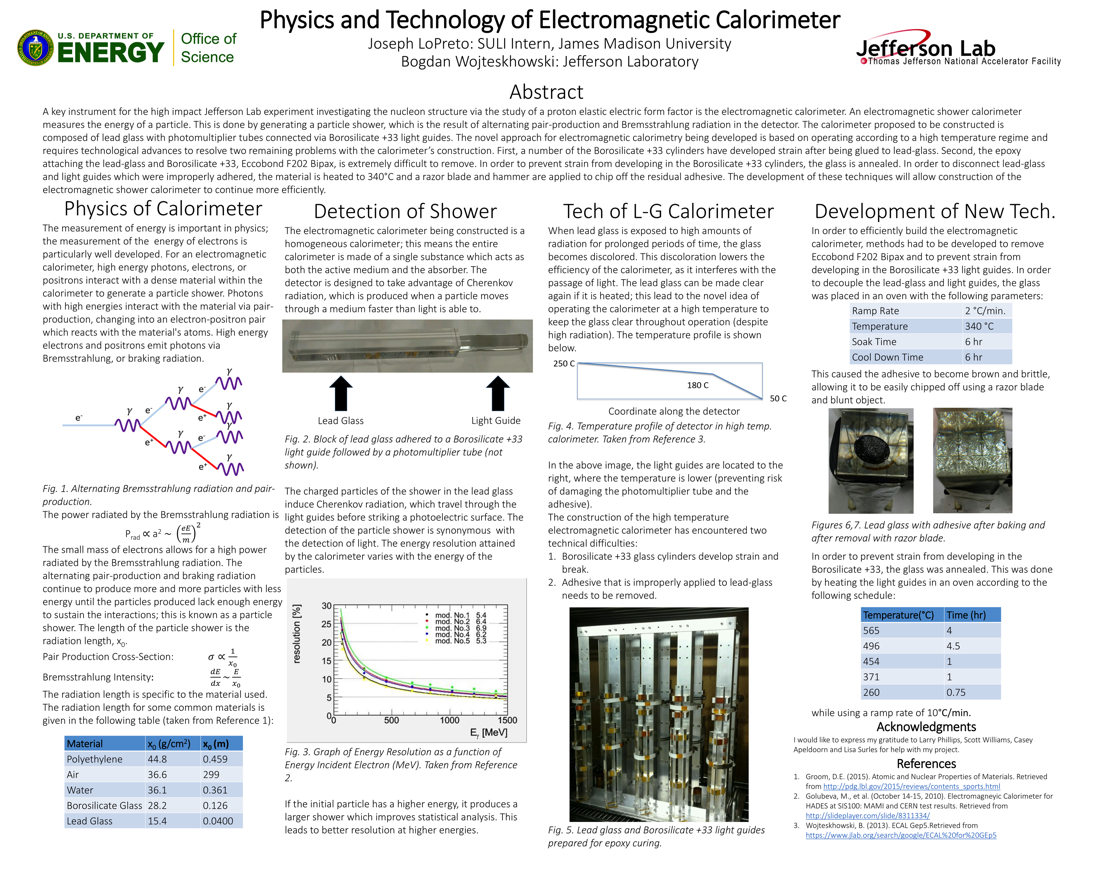Undergraduate Research at Jefferson Lab
Physics and Technology of EM Calorimeter
Student: Joseph LoPreto
School: James Madison University
Mentored By: Bogdan Wojtsekhowski
A key instrument for the high impact Jefferson Lab experiment investigating the nucleon structure via the study of a proton elastic electric form factor is the electromagnetic calorimeter. An electromagnetic shower calorimeter measures the energy of a particle. This is done by generating a particle shower, which is the result of alternating pair-production and Bremsstrahlung radiation in the detector. The calorimeter proposed to be constructed is composed of lead glass with photomultiplier tubes connected via Borosilicate +33 light guides. The novel approach for electromagnetic calorimetry being developed is based on operating according to a high temperature regime and requires technological advances to resolve two remaining problems with the calorimeter's construction. First, a number of the Borosilicate +33 cylinders have developed strain after being glued to lead-glass. Second, the epoxy attaching the lead-glass and Borosilicate +33, Eccobond F202 Bipax, is extremely difficult to remove. In order to prevent strain from developing in the Borosilicate +33 cylinders, the glass is annealed. In order to disconnect lead-glass and light guides which were improperly adhered, the material is heated to 340°C and a razor blade and hammer are applied to chip off the residual adhesive. The development of these techniques will allow construction of the electromagnetic shower calorimeter to continue more efficiently.

Citation and linking information
For questions about this page, please contact Education Web Administrator.
